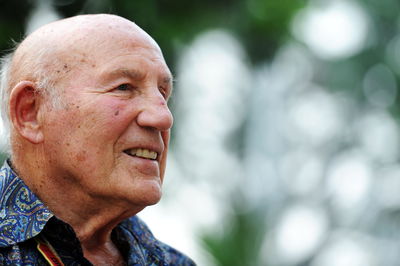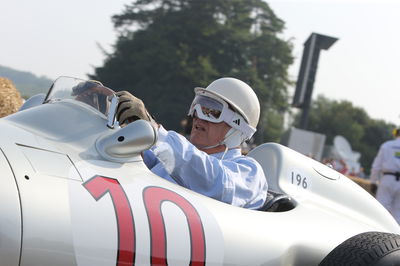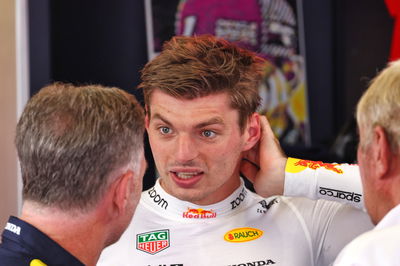Sir Stirling Moss: Britain’s leading legend in F1
As Formula 1 icons go, Sir Stirling Moss will remain one of the all-time greats for both what he did on track and for paving the way for future stars to emulate his achievements.
Considered the greatest driver to never win an F1 world championship, four-time title runner-up Moss was humble about his career and pointed towards Juan Manuel Fangio as the best driver of his era given his superior statistics as a five-time world champion with 24 wins from 51 starts against Moss’s 16 wins from 66 starts.

As Formula 1 icons go, Sir Stirling Moss will remain one of the all-time greats for both what he did on track and for paving the way for future stars to emulate his achievements.
Considered the greatest driver to never win an F1 world championship, four-time title runner-up Moss was humble about his career and pointed towards Juan Manuel Fangio as the best driver of his era given his superior statistics as a five-time world champion with 24 wins from 51 starts against Moss’s 16 wins from 66 starts.
But what Moss achieved goes beyond race victories and world titles, as he became the leading light for Great Britain alongside Mike Hawthorn to inspire the numerous stars who would follow in their footsteps.
Moss became the first home winner of the British Grand Prix at Aintree in 1955, beating Mercedes teammate Fangio by less than a car’s length, and provided a boost to the motorsport world in the fallout from the Le Mans 24 Hours disaster that occurred the month before.
With several races subsequently cancelled, it meant despite taking victory on home soil Moss couldn’t overhaul Fangio in the points standings but the feat still stimulated a nation with a deep-rooted passion for motorsport.
Moss’s inability to win an F1 world title never came down to his talent, as a combination of poor reliability and racing for the underdog in weaker machinery eventually cost him against the likes of Fangio and Hawthorn.
Famously, Moss came closest to an F1 crown in 1958 when he sportingly defended Hawthorn to stop him from being disqualified at the Portuguese Grand Prix for reversing in the race. With Hawthorn keeping his points, later that season he went on to beat Moss to the world championship by just a single point.
It was Moss’s sportsmanship and grace which saw him rise above many others in terms of his F1 legacy, even if he had no world championships to show for it.
It’s not to say Moss’s record was a poor one – far from it. 212 victories from 529 races across all disciplines in his career is a win ratio very few can match as he also demonstrated his talents in endurance racing and sportscars.
With Moss remaining a prominent figure until his enforced retirement in 1962, when he crashed at Goodwood and went into a coma for one month and spent six months recovering from partial paralysis, he was able to inspire the next wave of British drivers including the likes of future world champions Graham Hill, Jim Clark and Sir Jackie Stewart.
Moss’s influence has also stretched into the modern day with both Jenson Button and Lewis Hamilton giving great admiration for him.
Hamilton in particular has shared a huge affinity with Moss having grown closer to him through their Mercedes connections.
Multiple generations split the pair but Hamilton showed his affection to both Moss and his era of F1 racing in 2015 when the duo got together to drive a pair of Moss’s Mercedes cars at Monza.
“I certainly will miss our conversations. To be honest, it was such an unusual pairing, our friendship,” Hamilton wrote on his Instagram account in tribute to Moss. “Two people from massively different times and backgrounds but we clicked and ultimately found that the love for racing we both shared made us comrades.
“I am truly grateful to have had these special moments with him. Sending my prayers and thoughts to his family. May he rest in peace.”
Moss was one of Great Britain’s first F1 superstars with Hamilton picking up that baton to inspire the next generation.
The outpouring of tributes to Moss from across the sporting world shows the mark of the man who personified racing and helped start a line of British racing greats.











